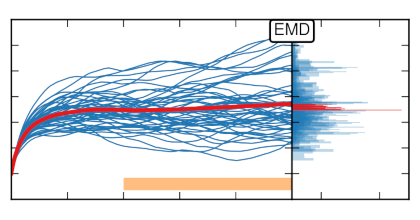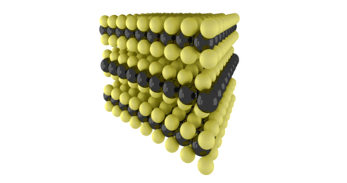Beyond Perturbation: Modeling Anharmonicity in Materials
F. Eriksson
Doctoral Thesis
(2024)
url: https://research.chalmers.se/publication/540860
The vibrational motion of atoms is essential for understanding condensed matter systems. It directly influences numerous thermodynamic properties with significant technological implications. Additionally, these atomic movements indirectly contribute to a variety of electronic and optical properties, making the study of vibrations both challenging and rewarding.
Today, we conceptualize these collective vibrational excitations as phonons. The study of phonons bridges theoretical and experimental approaches through computer simulations. Typically, phonons are studied at the lowest harmonic order and occasionally to the first order using perturbation theory. However, in many systems of interest, anharmonic motion, which represents interactions among phonons, is critical. Modeling this anharmonicity beyond perturbation theory is computationally intensive. Fortunately, recent advancements in various fields, both within and outside condensed matter physics, have made these simulations more feasible.
In this thesis, the primary computational tools for studying phonons are outlined and applied to a diverse range of materials. Emphasis is placed on understanding the underlying dynamics through microscopic correlation functions and their link to experimental observables via spectral functions. Additionally, some practical details, often overlooked in the literature, are discussed. Specifically, the framework of lattice dynamics and the characterization of the potential energy surface through force constants are described. For complex systems that extend beyond perturbation theory, the complementary approach of molecular dynamics is explored, with a focus on phonon dynamics.
These techniques are applied to two sets of materials currently of interest. First, anisotropic thermal conduction in rotationally disordered 2D van der Waals structures is examined using the Green-Kubo method. The findings align well with experimental results, demonstrating a substantial anisotropy that could be advantageous for managing thermal waste in integrated circuits. Moreover, the chemistry-independent suppression of through-plane thermal conductivity in these materials is shown. Additionally, through-plane thermal conduction as a function of the moiré twist angle is analyzed and correlated with an entropy measure. Lastly, the limitations of the quasi-particle picture of phonons are investigated in an inorganic halide perovskite. It is found that the soft phonons are overdamped over a wide temperature range above the phase transition but remain consistent with the model of independent damped harmonic oscillators.



